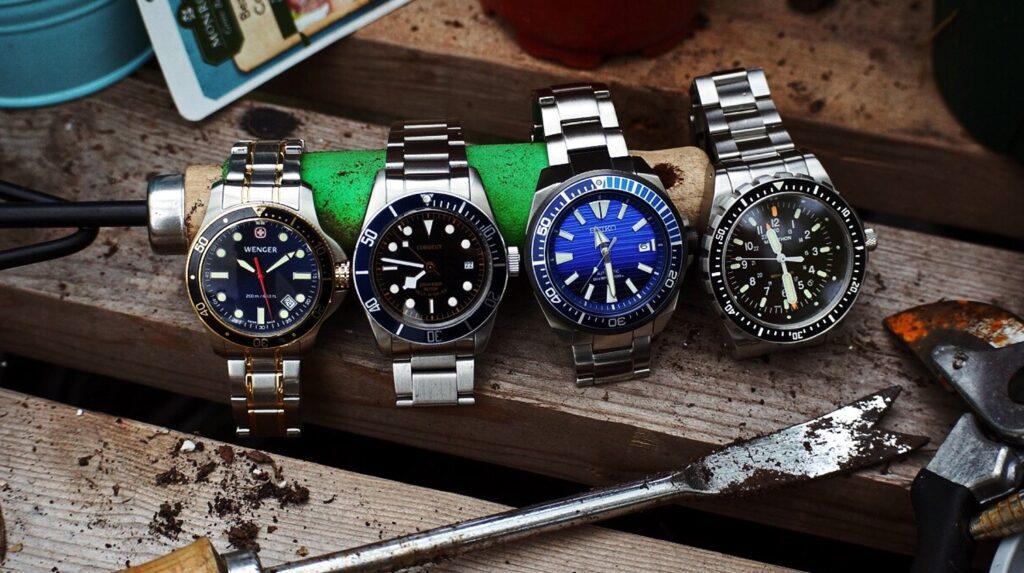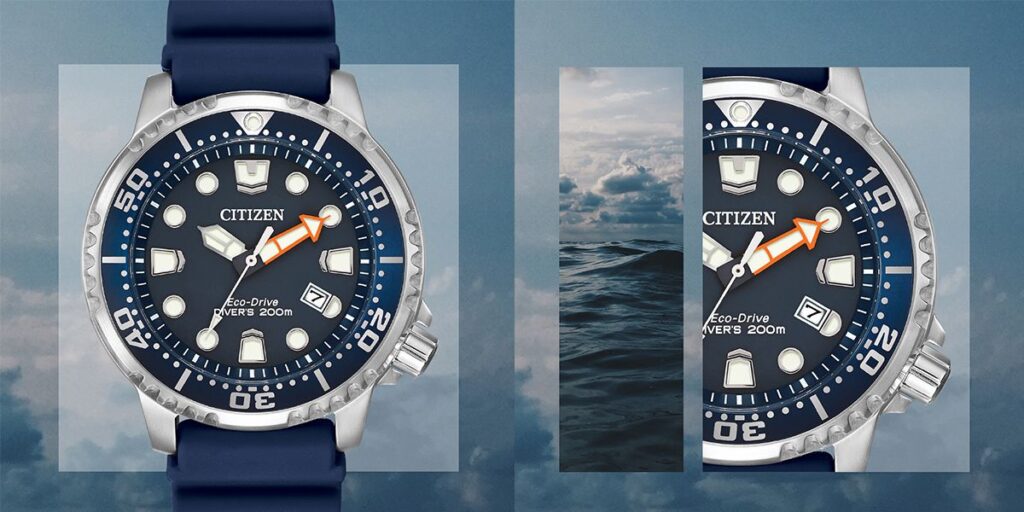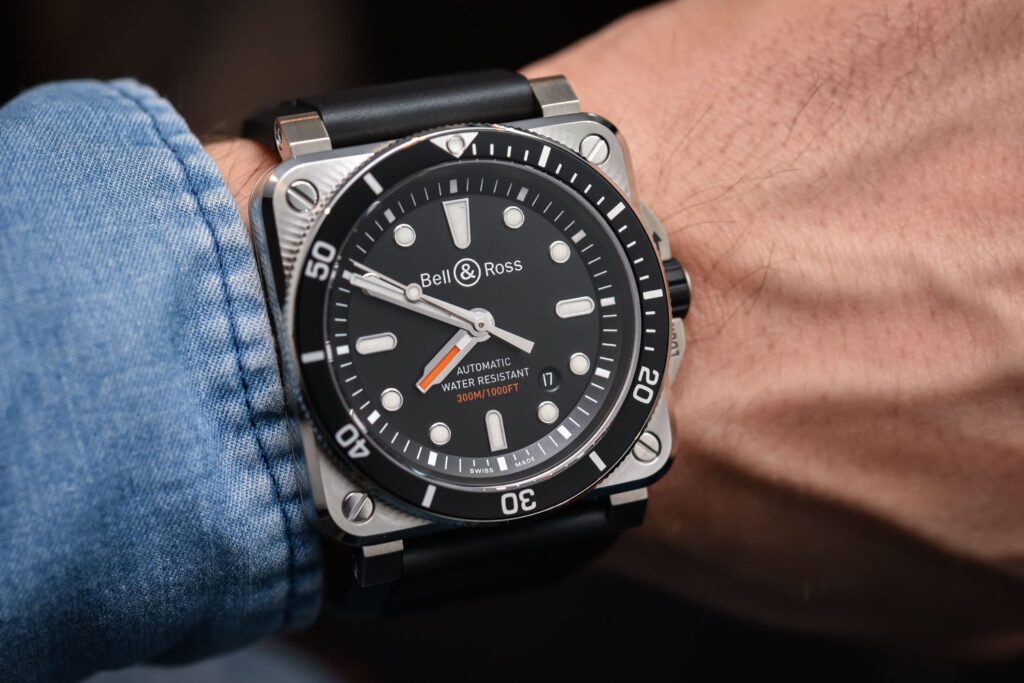What is Water Resistance?

A common stamp on modern watches, the phrase “water resistant” is kind of a loaded term. Although the phrase is often followed with a “meters” depth—or pressure units known as “bars” or “atmospheres”—this measurement does not often indicate the actual amount of distance a watch can last underwater. Indeed, it’s remarkably often that a proposed water resistance is not exactly as it reads. Though this doesn’t necessarily mean that watch companies are attempting to deceive consumers, it can be initially misleading to find these ratings on a case or dial.
Essentially, most water resistance ratings reflect static depth testing for water resistance. These tests are done on a sample set of watches, which are selected from a recently manufactured watch line, for testing. As is stands, static testing—not accounting for movement or variations in pressure—does not fully reflect depth capability when worn. However, these ratings can work as a shorthand scale for understanding the kind of water use a watch will withstand. This reality might beg some questions: What do the numbers really mean? How effective is my watch’s water resistance? And is my dive watch an actual dive watch? Ahead, we’ll have a look at what the markings mean, to address these questions.
30
Meters/ 3 Bar/ 3 Atmospheres
When you see this marking on a watch, it will
do best against rain and splashing. Though it reads out to about 98feet, this
is not how far down you’ll want to take it. If it accidentally gets quickly
submerged in still water, you’ll likely be alright. However, watches marked for
this depth should be actively kept away from use beneath water.
50
Meters/ 5 Bar/ 5 Atmospheres
The 50 meter mark (static tested) is where
you’re going to be doing alright with basic water use. If your watch has this
stamp, you can hazard a trip to the pool with your wristwatch. This still comes
with its own risk. Even at this rating, prolonged water use can negatively
affect your watch. So, take it easy on 50 meter rated watches regarding overall
water use.
100
Meters/ 10 Bar/ 10 Atmospheres
A quick pause: If you’ve noticed a pattern, pressurization ratings follow “meter” ratings by 10% the value of the meter rating. Hopefully this makes discerning water resistance a bit easier in the future. Now, at 100 meters, a wristwatch can withstand snorkel level depths. Although this is far from ~300feet, you’re doing a lot better than the 50 meter rating. Despite this, prolonged water use can still have a negative effect on the watch—especially at lower depths. So, stick to taking this one to the pool in the deep end, or keep it handy when dealing with simple shallow submersions.
200
Meters/ 20 Bar/ 20 Atmospheres

This marked water resistance operates similarly to the 100 meter stamp. The biggest difference being that the watch can be used for longer periods of time, at about snorkeling depths. Though these watches can go down further, as well, the recommended depth to stay under for effective use is about 10 meters. Like the above ratings, prolonged use at progressively lower depths gets more and more dangerous—in terms of water resistance. It is important to remain mindful of this trend with water use on any watch. In common usage, 200 meter watches fare well in pools. As it stands, this rating is often given to athletic training watches. It is important to note, though, that buttons should not be pressed on the watch while it is submerged—even with this static-test rating (or with most water watches, as a good rule-of-thumb).
300+
Meters and ISO 6425
At the 300+ water resistant mark, you’re going to do well with most heavy water use. This is especially true if the static tests on the watch exceed the 300 meter mark. Although this is true, it is important to note here that these watches are not—in terms of international standards—considered true dive watches. Unless a watch is marked with the International Organization for Standards (ISO) number 6425, it is technically not a standardized dive watch. ISO 6425 watches are pressurized and are tested at 125% of their rated depth—beginning at 100 meters. For scale, this depth rating is deeper than nuclear submarines can dive. Despite this standard, many watch manufacturers make perfectly dive capable timepieces. It is important, though, to keep an eye out for static-testing ratings and pressurized seals when shopping for a fully dive-capable wristwatch.

In order to maintain the relative water resistance of a wristwatch, it’s important to have its gaskets sealed any time it needs to be maintenanced (battery changes and mechanical cleanings). As well, if the watch is a true ISO tested dive watch, or is pressurized at all, it should be re-pressurized any time it’s opened for upkeep. This practice will keep your water resistant watch working smoothly at its respective depth rating. Or, at the very least, this will protect your timepiece from the day-to-day moisture that tries to make its way into the watch.
Furthermore, keep an eye out for shower-steam and hot-water submersion—even the most water resistant watches are not equipped to deal with these conditions. Indeed, it is surely important to be very wary of steam rooms, hot tubs, and showers. The strongest of dive watches can be damaged by hot water and water vapor. Lastly, if your watch is not marked for water resistance at all, definitely keep up its gasket seals. This will effectively keep the timepiece running longer, when matched with actively avoiding water exposure altogether. Surely—with any watch—being mindful of relative water resistance will keep your movements dry and functional. This practice will keep your watch “above water” for years to come.
Times Ticking has been in operation for more than 30 years, since 1982. We have performed watch repair for customers both locally and internationally. If it Ticks! We KNOW it! Our team of watch repair technicians have a combined experience in watchmaking of over 120 years.

